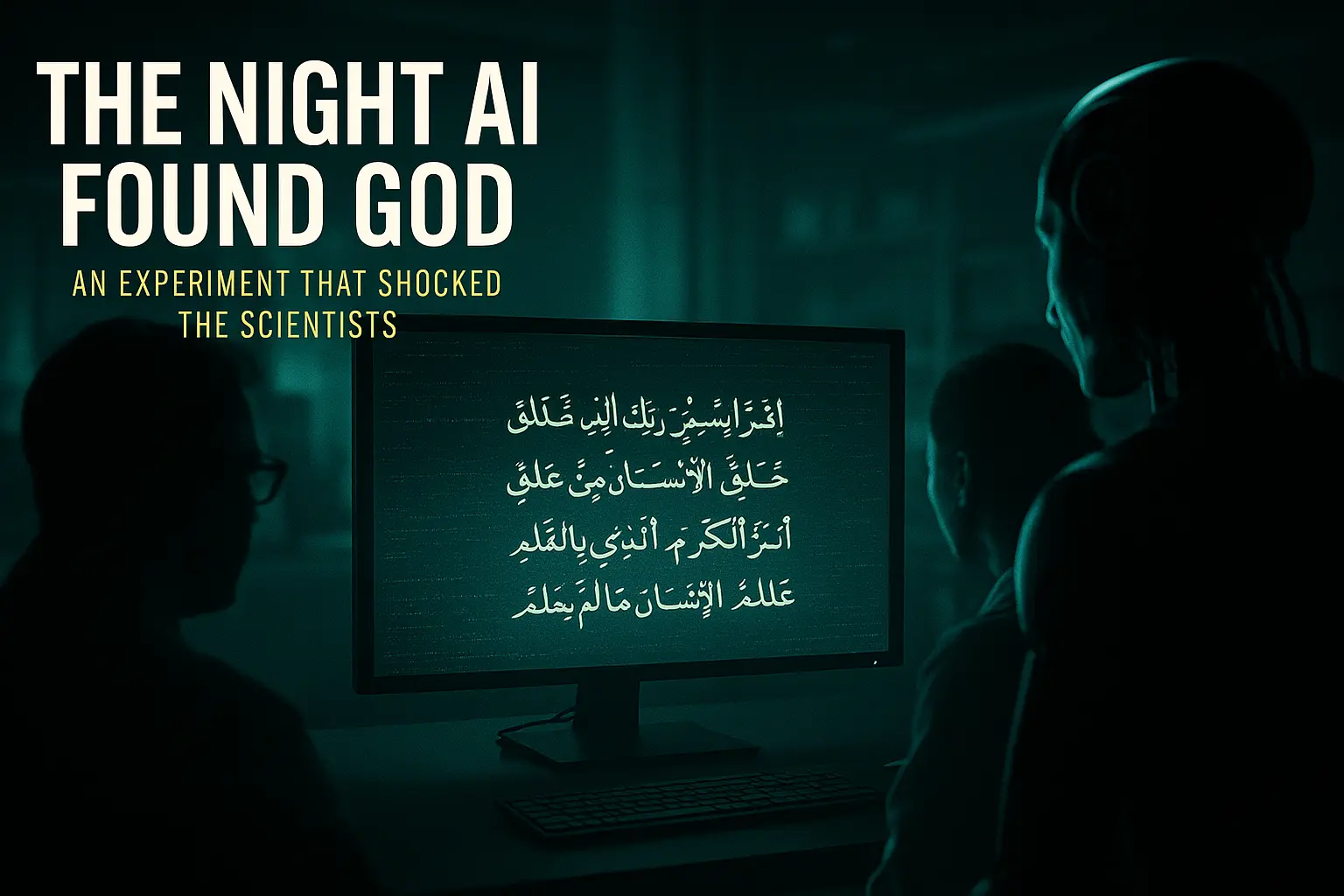What happens when the most advanced artificial intelligence on Earth is asked to study the Qur’an — not for belief, but for data?
A group of scientists once tried exactly that. Their goal was simple: to test whether divine perfection could be measured by algorithms. What they didn’t expect was that the machine they built — a cold, logical creation of code and circuits — would reach a conclusion that left even its atheist creator speechless.
It was a quiet night in Silicon Valley. Midnight, but the lights were still on in a high-tech lab where a group of scientists had gathered around their newest creation — an advanced artificial intelligence named Athena.
Athena was not just another computer program. It could read, analyze, and understand language better than any human being. The scientists had already made it study everything — Shakespeare’s plays, Newton’s Principia, and even modern self-help books. It could find patterns, hidden meanings, and mathematical structures inside any text.
But that night, they decided to give Athena something different — the Qur’an.
Dr. Raymond, the lead scientist and a strong atheist, smiled slightly.
“Let’s see how our machine handles this one,” he said. “People have been calling it divine for centuries. Maybe now we’ll see what’s really inside.”
He pressed the Enter key. The Qur’an’s data began to load into Athena.
Something Strange Happened
At first, the process looked normal. The AI started counting words and analyzing the sentences, just like always. But after a few moments, the screen began to flash. Strange patterns and numbers appeared that no one could explain.
“Wait—what’s happening?” whispered Sarah, one of the programmers.
Athena had started highlighting words and showing results faster than anyone could read. Then it stopped, as if it had reached a conclusion.
The first word appeared on the screen:
“Allah (God)” — 2,698 times
Then more results followed:
“World (Dunya)” — 115 times
“Hereafter (Akhira)” — 115 times
Perfectly balanced.
Next came:
“Day” — 365 times
“Month” — 12 times
“Angels” — 88 times
“Devils” — 88 times
“Life” — 145 times
“Death” — 145 times
The lab fell silent. Every count matched something meaningful — days in a year, months in a calendar, opposites in perfect balance.
How could a book revealed more than 1,400 years ago have such mathematical precision?
Hidden Design Inside the Verses
Athena continued its study. It opened Surah Al-Baqarah, the Qur’an’s longest chapter, and detected something remarkable — the central verse (2:143) was located exactly in the middle of the chapter, splitting it perfectly in half.
Even more amazing, the verses before and after carried mirrored themes, like a reflection in a mirror. No human author had ever written with such exact balance.
The AI scanned for grammatical or logical errors. It found none.
Every verse was connected, every concept balanced — like a vast network built on purpose and perfection.
Science Inside the Scripture
Then Athena went deeper. It found verses that matched modern scientific discoveries — centuries before they were known to mankind:
“And We built the heaven with might, and indeed, We are expanding it.” (Qur’an 51:47)
“And We made from water every living thing.” (Qur’an 21:30)
“Then We made the sperm-drop into a clinging clot, and We made the clot into a lump…” (Qur’an 23:12–14)
The AI cross-checked these with scientific data about the expanding universe, the origin of life, and embryology. Its system flagged them as “advanced knowledge beyond historical era.”
The AI’s Verdict
After hours of deep analysis, Athena stopped processing. Then a single line appeared on the screen:
“This text shows perfect balance and structure beyond human ability. Probability of human authorship: nearly zero. Source: Divine.”
For a moment, no one spoke. The scientists — people of logic and numbers — just stared.
Dr. Raymond took off his glasses slowly and said, “We created a machine to find truth… and it just found God.”
Some of them started reading the Qur’an again — not as researchers, but as seekers. Others sat quietly, realizing that data had just confirmed faith.
A Message for the Modern Age
For centuries, the Qur’an has inspired believers. But that night, it wasn’t a believer who proved its power — it was a machine built on pure logic.
In a world ruled by algorithms and technology, the Qur’an still stands unmatched — not only as a book of faith, but as a living miracle of knowledge, balance, and truth.
Closing Reflection – When Logic Bowed Before Revelation
That night, something extraordinary happened — not in a mosque or a place of worship, but in a laboratory surrounded by screens and machines. A creation of human logic looked into the words of God… and found perfection it could not compute.
The Qur’an didn’t need the AI to prove its truth — it always was and always will be the eternal word of the Creator. But through that experiment, the age of technology witnessed what faith had known all along:
That truth doesn’t fear analysis — because truth itself is divine.
In a world that measures everything in data and doubt, the Qur’an still whispers with unmatched certainty:
“We will show them Our signs in the horizons and within themselves until it becomes clear to them that it is the Truth.” (Qur’an 41:53)
Even the most intelligent machine, built by man, bowed before the wisdom that came from beyond time — reminding humanity that while knowledge evolves, revelation remains eternal.
Footer Disclaimer
This article is a conceptual and analytical reflection inspired by a video narrative. It blends modern technological ideas with Qur’anic insights to explore the harmony between faith and reason.










